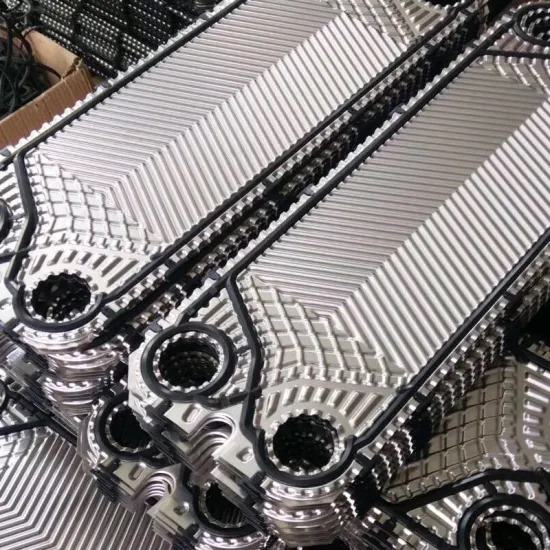Plate heat exchanger pads are one of the important components of plate heat exchangers. Choosing the right pad material is the key to ensuring Plate heat exchanger rubber gaskets material efficient and stable operation of the equipment.
The plate heat exchanger is mainly composed of two parts: a frame and a plate.The plate heat exchanger plate is made of a thin plate made of various materials and pressed into a corrugated shape with a grinding tool, and a corner hole is formed in the four corners of the plate for the flow path of the medium.The periphery of the plate and the corner hole are sealed with a rubber gasket.
The frame is composed of a fixed pressing plate, a movable pressing plate, upper and lower guide bars, and clamping bolts.The plate heat exchanger is formed by superimposing the plates in the middle of the fixed pressing plate and the movable pressing plate, and then clamping them with clamping bolts.What are the materials for the plate heat exchanger rubber gaskets?Plate heat exchanger gasket materials are nitrile rubber, EPDM rubber, hydrogenated nitrile rubber, fluorine rubber, neoprene rubber, butyl rubber and silica gel.The development of these high-performance rubber materials often comes from working closely with our customers to ensure that technical performance meets market demands.There are two kinds of rubber pad materials used in the market, namely EPDM and NBR.The temperature of EPDM (ethylene propylene diene monomer) rubber gasket is ≤140°C, which is good in temperature and pressure resistance, and is mostly used for hot water and water. Steam, milk high temperature sterilization and other conditions.
NBR rubber gaskets have a temperature of ≤110 °C, which is good in oil resistance and is mostly used in non-acid medium such as animal and vegetable oils and mineral oils.
